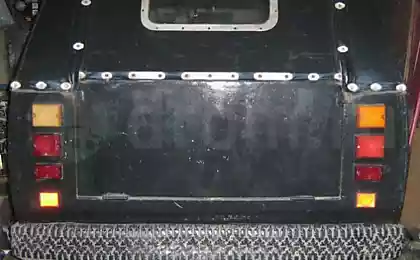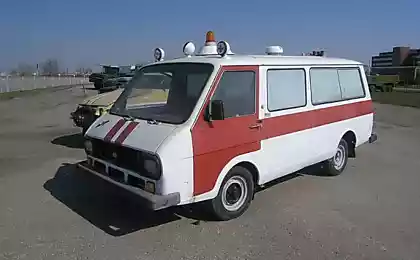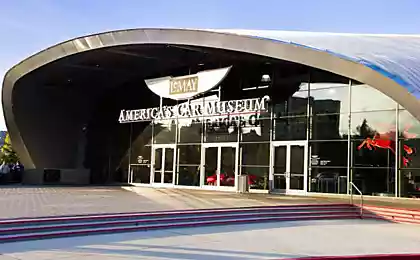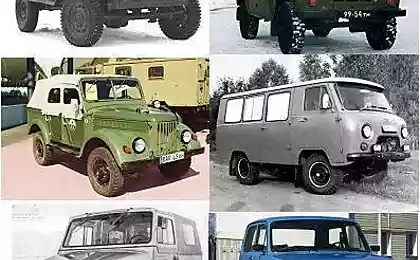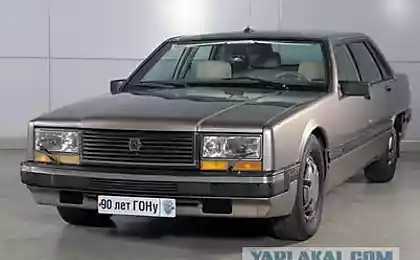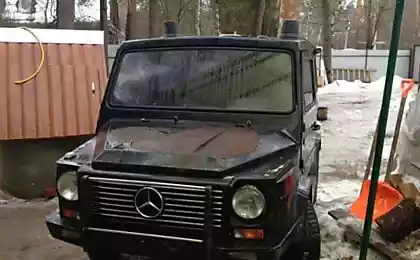505
LuAZ-969 — SEL the jeep is originally from Union
"Small tank", "Lunokhod", "Jerboa" — which only names are not given to the legendary Soviet car LUAZ-969 "Volyn". His incredible passing ability was recognized even outside the country, which is not so typical car come from the USSR. At the International motor show in Turin LUAZ-969М top SUVs Europe.
Evolved from a simple motorized truck for the collection of the wounded on the battlefield are indispensable to the rural conditions of the vehicle, this small SUV bizarre managed to gain a loyal fan base, and those who can't stand him for a spirit, but very few people leave indifferent.

LuAZ-969 is known for his absolutely unmatched maneuverability and an equally unmatched paucity of the cabin. And this is not surprising, because the original purpose of this vehicle was one hundred percent military.

In the early 1950s during the Korean war, the Lutsk automobile plant by the order of Ministry of defense developed the front edge of the conveyor — TPK. It was a motorized cart terrain no more than two feet in height, with four-wheel drive and a winch that was supposed to throw a parachute out of a plane. But, perhaps, the main feature was his ability to move through the water.

Soon Soviet engineers guessed that military equipment can be adapted to the needs of the village, and thus on the basis of the OPC a decade later was born the "Volyn" — the first Soviet all-terrain vehicle.

The first civilian samples can undoubtedly be described as a rural jeep about the movement of water had to forget the driver and passengers were placed as in a conventional car, canvas top added crotch canvas sidewall. LuAZ-969В became the first production car with front-wheel drive axle.
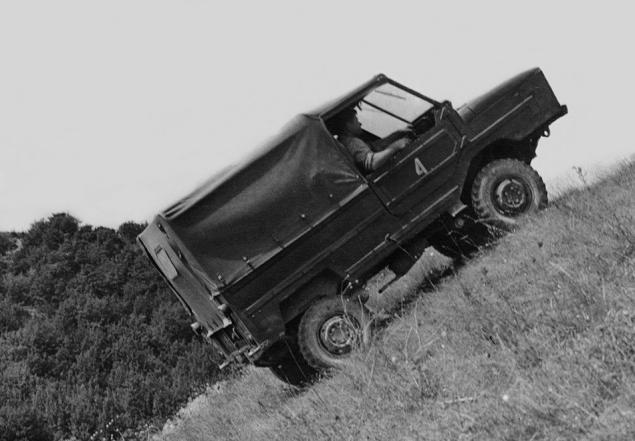
Letter "b" in the name just meant a front-wheel drive modification. The fact that the start of serial production of the model is not able to provide a reducer of the rear bridge, which is why it went front-wheel drive. This story continued until the early 1970s, when LUAZ finally found a four-wheel drive.

What offroad LUAZ can "beat" anyone — even "the Field", though "Hummer", is true. Engine, gearbox, final drive and driveshaft compactly located in the rear of the integrated spar frame, and all nodes are actually located in a single hermetic case. Independent torsion bar suspension trailing arms front and rear has a huge stroke, and 13-inch tires — a very powerful cleats. It is no exaggeration "the little tank engine from "zaporozhtsa".

Nevertheless the problems the car was missing. The motor from "Zaporozhets" at the same time and gave the advantage of being in the front, and was a kind of beach because of its low power. The car tried to upgrade first in 1975, when "Volyn" there was a motor of 40 horsepower (model became known as LUAZ-969А), and then in 1979, when the doors appeared (attention!) locks, the cabin — seat cars, the outside of the body became less awkward. Model 969М began to look different.
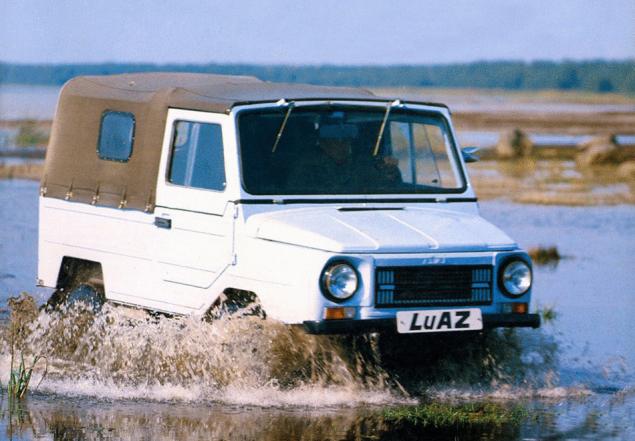
In the early 90s — around the time when the engine from "Zaporozhets" was replaced by the engine of the "Tavria" — LUAZ-969 was the LUAZ-1302 due to the change of indexes in the USSR. New engine already had a liquid cooled, 4 cylinder, 53 horsepower. "Volyn" has now consumed 7.7 liters per 100 kilometers (in contrast to the previous official 10) and has a top speed of up to 100 kilometers per hour (this was 85). About a year after the launch of the new model Ukraine seceded from the USSR and contacts Loisa with Russia stopped.

It is not quite clear when exactly LUAZ-969 was called "Volyn", but name that's lasted a long time, starting from 1967 and until the early 1990s. However, people in this SUV were still a lot of names, like "Fantomas" — for comic and villainous appearance, "BMW", which was glossed as "war Machine Volyn", "Jerboa" — for the ability to "jump" on any location and many others.

During the 1990-2000-ies there were several attempts to "upgrade" models, but nothing sensible ever came of it. In the mid-2000s, the Lutsk automobile plant completely stopped the production of cars, than put an end to the history of brisk Soviet "jerboa".
Source: dnpmag.com/2014/12/01/luaz-969-selskij-dzhip-rodom-iz-soyuza/
Evolved from a simple motorized truck for the collection of the wounded on the battlefield are indispensable to the rural conditions of the vehicle, this small SUV bizarre managed to gain a loyal fan base, and those who can't stand him for a spirit, but very few people leave indifferent.

LuAZ-969 is known for his absolutely unmatched maneuverability and an equally unmatched paucity of the cabin. And this is not surprising, because the original purpose of this vehicle was one hundred percent military.

In the early 1950s during the Korean war, the Lutsk automobile plant by the order of Ministry of defense developed the front edge of the conveyor — TPK. It was a motorized cart terrain no more than two feet in height, with four-wheel drive and a winch that was supposed to throw a parachute out of a plane. But, perhaps, the main feature was his ability to move through the water.

Soon Soviet engineers guessed that military equipment can be adapted to the needs of the village, and thus on the basis of the OPC a decade later was born the "Volyn" — the first Soviet all-terrain vehicle.

The first civilian samples can undoubtedly be described as a rural jeep about the movement of water had to forget the driver and passengers were placed as in a conventional car, canvas top added crotch canvas sidewall. LuAZ-969В became the first production car with front-wheel drive axle.

Letter "b" in the name just meant a front-wheel drive modification. The fact that the start of serial production of the model is not able to provide a reducer of the rear bridge, which is why it went front-wheel drive. This story continued until the early 1970s, when LUAZ finally found a four-wheel drive.

What offroad LUAZ can "beat" anyone — even "the Field", though "Hummer", is true. Engine, gearbox, final drive and driveshaft compactly located in the rear of the integrated spar frame, and all nodes are actually located in a single hermetic case. Independent torsion bar suspension trailing arms front and rear has a huge stroke, and 13-inch tires — a very powerful cleats. It is no exaggeration "the little tank engine from "zaporozhtsa".

Nevertheless the problems the car was missing. The motor from "Zaporozhets" at the same time and gave the advantage of being in the front, and was a kind of beach because of its low power. The car tried to upgrade first in 1975, when "Volyn" there was a motor of 40 horsepower (model became known as LUAZ-969А), and then in 1979, when the doors appeared (attention!) locks, the cabin — seat cars, the outside of the body became less awkward. Model 969М began to look different.

In the early 90s — around the time when the engine from "Zaporozhets" was replaced by the engine of the "Tavria" — LUAZ-969 was the LUAZ-1302 due to the change of indexes in the USSR. New engine already had a liquid cooled, 4 cylinder, 53 horsepower. "Volyn" has now consumed 7.7 liters per 100 kilometers (in contrast to the previous official 10) and has a top speed of up to 100 kilometers per hour (this was 85). About a year after the launch of the new model Ukraine seceded from the USSR and contacts Loisa with Russia stopped.

It is not quite clear when exactly LUAZ-969 was called "Volyn", but name that's lasted a long time, starting from 1967 and until the early 1990s. However, people in this SUV were still a lot of names, like "Fantomas" — for comic and villainous appearance, "BMW", which was glossed as "war Machine Volyn", "Jerboa" — for the ability to "jump" on any location and many others.

During the 1990-2000-ies there were several attempts to "upgrade" models, but nothing sensible ever came of it. In the mid-2000s, the Lutsk automobile plant completely stopped the production of cars, than put an end to the history of brisk Soviet "jerboa".
Source: dnpmag.com/2014/12/01/luaz-969-selskij-dzhip-rodom-iz-soyuza/





